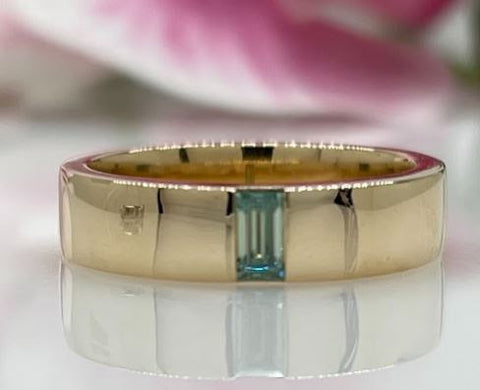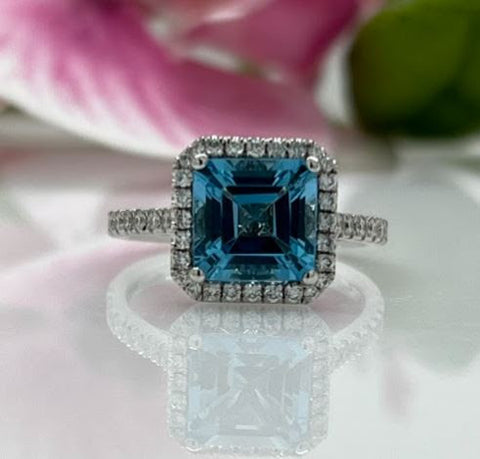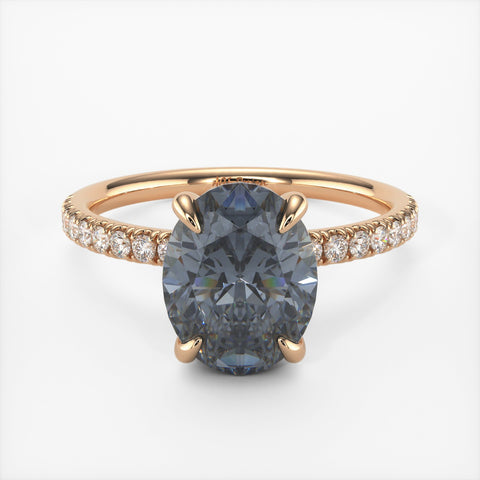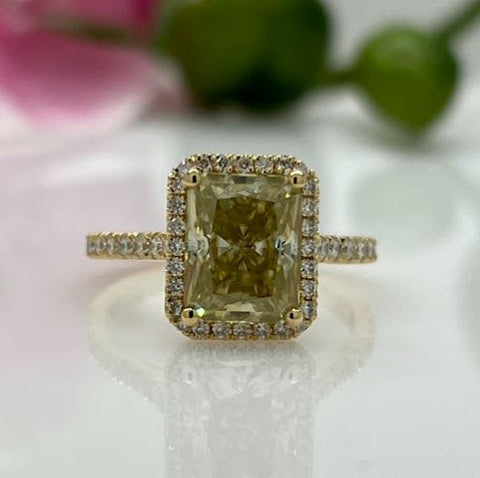Diamond Dreams: Exploring the Magic of Rare and Colored Diamonds
Diamonds have captured the hearts of countless individuals throughout history. These mesmerizing gemstones are often associated with purity, eternity, and love. Natural diamonds, with their timeless beauty, have traditionally been the symbol of commitment in engagement rings and wedding bands. However, the allure of diamonds extends far beyond their classic white brilliance. In recent years, a new world of colored diamonds has taken the jewelry industry by storm. From the rarest diamond color to colorful diamonds created in laboratories, this article delves into the enchanting universe of these precious gems.

Rare Colored Diamonds: Nature's True Wonders
Natural colored diamonds are among the most remarkable and sought-after gemstones in the world. Their captivating hues are the result of unique geological conditions and the presence of certain elements or structural defects in the crystal lattice. While the most common natural diamond colors are white or various shades of yellow and brown due to nitrogen impurities, rarer colors are truly exceptional.
Among the rarest diamond colors, blue stands out as a true marvel. These gems are incredibly scarce, and their captivating blue shades are often attributed to the presence of boron during their formation. The Hope Diamond, with its deep blue hue, is one of the most famous examples of a natural blue diamond. Its mysterious history and stunning color make it a symbol of romance and intrigue.
On the other end of the spectrum, red diamonds are among the rarest in the world. These exquisite gems derive their color from structural defects within the diamond lattice, resulting in a vibrant red hue. The Moussaieff Red Diamond is one of the most renowned examples, a true masterpiece of nature's artistry.
Yellow, green, and pink are other striking natural diamond colors. Each has its own unique charm and rarity. Yellow diamonds, often referred to as "canary diamonds," achieve their vivid coloration due to nitrogen impurities. Green diamonds can range from subtle, minty hues to intense, emerald-like greens and are believed to be the result of natural radiation exposure. Pink diamonds, on the other hand, are adored for their romantic and feminine appeal. Their pink shades are attributed to structural deformities within the crystal lattice, causing light to interact and create a pink glow. The Pink Star Diamond, weighing in at 59.60 carats, is a mesmerizing example of a natural pink diamond's beauty.

Lab Diamond Engagement Rings and Wedding Bands: A Contemporary Choice
While natural colored diamonds are a symbol of rarity and exclusivity, modern technology has paved the way for lab-grown diamonds that embrace a colorful and ethical future. Lab diamond engagement rings and wedding bands are becoming increasingly popular for a multitude of reasons, including affordability, sustainability, and customization.
Lab-grown diamonds, created through processes like Chemical Vapor Deposition (CVD) and High-Pressure High-Temperature (HPHT), can be tailored to match a wide range of natural diamond colors. This means that you can select your dream color for an engagement ring or wedding band, such as blue, pink, or green, and have it created sustainably in a laboratory setting. Lab-grown diamonds offer a more affordable alternative to their natural counterparts while retaining their optical and chemical properties.
When it comes to lab-grown diamonds, the options are nearly endless. Lab diamond engagement rings can be customized to showcase your preferred diamond shape, carat weight, and, of course, color. Whether you dream of a breathtaking blue sapphire alternative, a delicate pink diamond, or a vibrant green gem, lab-grown diamonds can bring your vision to life. These gems are a testament to the modern world's commitment to sustainability and ethical sourcing, offering a guilt-free alternative to mined diamonds.
Similarly, lab diamond wedding bands offer a wide array of possibilities. You can choose to match your engagement ring's color or select a complementary shade to create a stunning contrast. With lab-grown diamonds, you have the freedom to design wedding bands that perfectly complement your unique style, personality, and the symbolism of your commitment.

Colorful Diamonds: Beyond the Spectrum
Colored diamonds have not only become highly desirable but have also led to the expansion of creative jewelry design. These gems are often celebrated for their elegance and versatility, providing endless opportunities for self-expression.
One fascinating aspect of colorful diamonds is that they can be found in various color saturations and shades. The depth of color can range from faint to vivid, allowing you to select a hue that resonates with your emotions and style. From light pink to intense purples, from gentle greens to deep blues, there's a colorful diamond for every taste and occasion.

The Rarest Diamond Color: A Closer Look
One of the most intriguing aspects of rare colored diamonds is their extreme rarity. The rarest diamond color is a matter of debate among gem enthusiasts and collectors, but red and green diamonds are often considered the top contenders. Red diamonds are so exceptionally rare that only a few have ever been discovered, and they remain a source of fascination for gemologists and collectors alike. Green diamonds, especially vivid green varieties, are also highly sought after and are rarely found in nature.

Colored Moissanite Engagement Rings: A Budget-Friendly Alternative
As we explore the world of colored gemstones, it's worth mentioning colored moissanite engagement rings. Moissanite is a lab-grown gemstone that offers an affordable and ethical alternative to colored diamonds. Moissanite engagement rings come in a spectrum of colors, and they can closely mimic the appearance of colored diamonds, making them an attractive option for budget-conscious couples.

Whether you choose a colored diamond, a lab-grown diamond, or a moissanite, the key is to find the gemstone that resonates with your personal preferences, values, and budget.
In conclusion, the enchanting world of colored diamonds, from the rarest diamond color to the vibrant hues found in lab-grown and natural diamonds, offers endless opportunities for expression and individuality in the world of fine jewelry. The allure of these gemstones goes beyond traditional engagement rings and wedding bands, expanding the horizons of creativity and personal style in the world of jewelry design. Whether you opt for the timeless rarity of natural colored diamonds or the modern elegance of lab-grown options, the magic of colored diamonds will continue to captivate hearts for generations to come.


